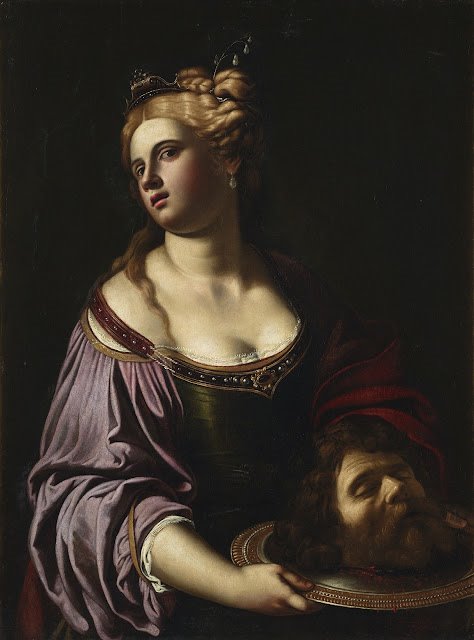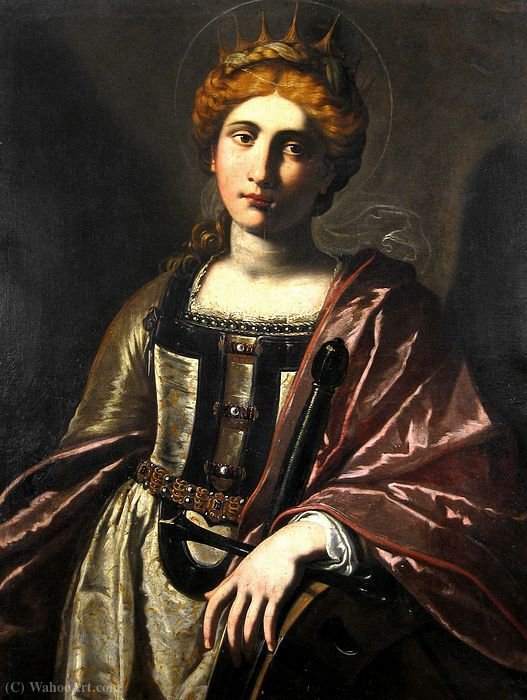La Musa Urania come Allegoria della geometria
Antiveduto Gramatica (Siena, 1571 - Roma, 1626) bottega
The Muse Urania (as Allegory of Geometry)
Workshop of Antiveduto Gramatica (Siena, 1571 - Rome, 1626)
Imperial Gramatica (Rome, 1599 - 1634) (?)
oil on canvas
Dimensions (cm): canvas 116 x 84
with frame 139 x 107
Provenance: Hargesheimer, House auction Düsseldorf, 16 March 2019 (lot 1788) - View details
This fine painting, in an excellent state of conservation, presents a portrait of a young girl in allegorical dress, where her sumptuous figure takes on the likeness of Urania, one of the nine Muses, figures from Greek mythology, daughters of Zeus and Mnemosyne, who in Greek religion represented the supreme ideal of Art and the symbols of the highest declensions of human thought.
Goddess of astronomy and geometry or, more broadly, of the natural sciences, the beautiful Urania holds a compass in her hand, symbol of the discipline of which she is the protector and emblem of the exact sciences.
The attire of the effigy attests that we are in the presence of a maiden of aristocratic origins: the quality of the fabrics, transparent organza, velvet and satin quilted with gold trimmings, the chromatic dominance of passionate red, are combined with refined and precious jewellery.
Represented in our canvas dressed in a dress that evokes a knight's cuirass, although the details are extremely feminine, she is wrapped in a blue cloak (the typical colour of the muse Urania) and crowned with a veil knotted like a turban and fastened by a jewelled tiara.
The style characteristics as well as the period of execution of our qualitative canvas lead us without hesitation to the work of a painter close to Caravaggio's Antiveduto Gramatica (Siena, 1571 - Rome, 1626), although we cannot exclude direct intervention by the master. A painter active in Rome in the first thirty years of the 17th century, Antiveduto Gramatica was already an established artist around 1590, with important patrons such as the Cardinal del Monte and Duke Ferdinando Gonzaga. He made use of valuable collaborators, first and foremost his son Imperiale, a direct continuer of his father's models and very much in keeping with his style, although naturally more immature in manner.
Placed among the leading figures of international Caravaggism, also active in the areas of Rome and Naples, Antiveduto Gramatica represents the peak of realist tendency painting in Siena during the first half of the 17th century.
To confirm the proposed attribution, it is sufficient to compare our canvas with others by the master who, although known for his numerous depictions of a religious nature, did not fail to flank profane, allegorical and mythological subjects. The portraits produced by Gramatica share, in fact, very similar physical types, especially those of women, with rounded and idealised faces, dressed in sumptuous clothes treated with delicacy. In addition, his drawing is sharp and the lighting shows strong contrasts, achieving an intensity of great impact.
The light shapes the figure and the contrast with the shadows creates an excellent rendering of volumes. The figures, in particular, portrayed with powerful close-ups, evoke Caravaggesque models, which we can justify as a probable direct influence during his stay in Rome. The gestural expressiveness is also studied and rendered with great elegance, her gaze turned to the manual and the eloquence of the gesture with which she holds the compasses make the Muse seductive.
The painting's condition is excellent: the work has been cleaned and re-stained, and is presented in all its splendour, without any significant restoration or retouching.
It is possible to view photographic material of the painting prior to its conservation restoration. The work is completed by a lacquered and gilded wooden frame.
ADDITIONAL INFORMATION:
The painting is sold with a certificate of authenticity and a descriptive iconographic card.
We take care of and organise the transport of the purchased works, both for Italy and abroad, through professional and insured carriers.
Should you have the desire to see this or other works in person, we will be happy to welcome you to our new gallery in Riva del Garda, Viale Giuseppe Canella 18. We are waiting for you!
Contact us for any information or to arrange a visit, we will be happy to answer you.
Follow us also on :

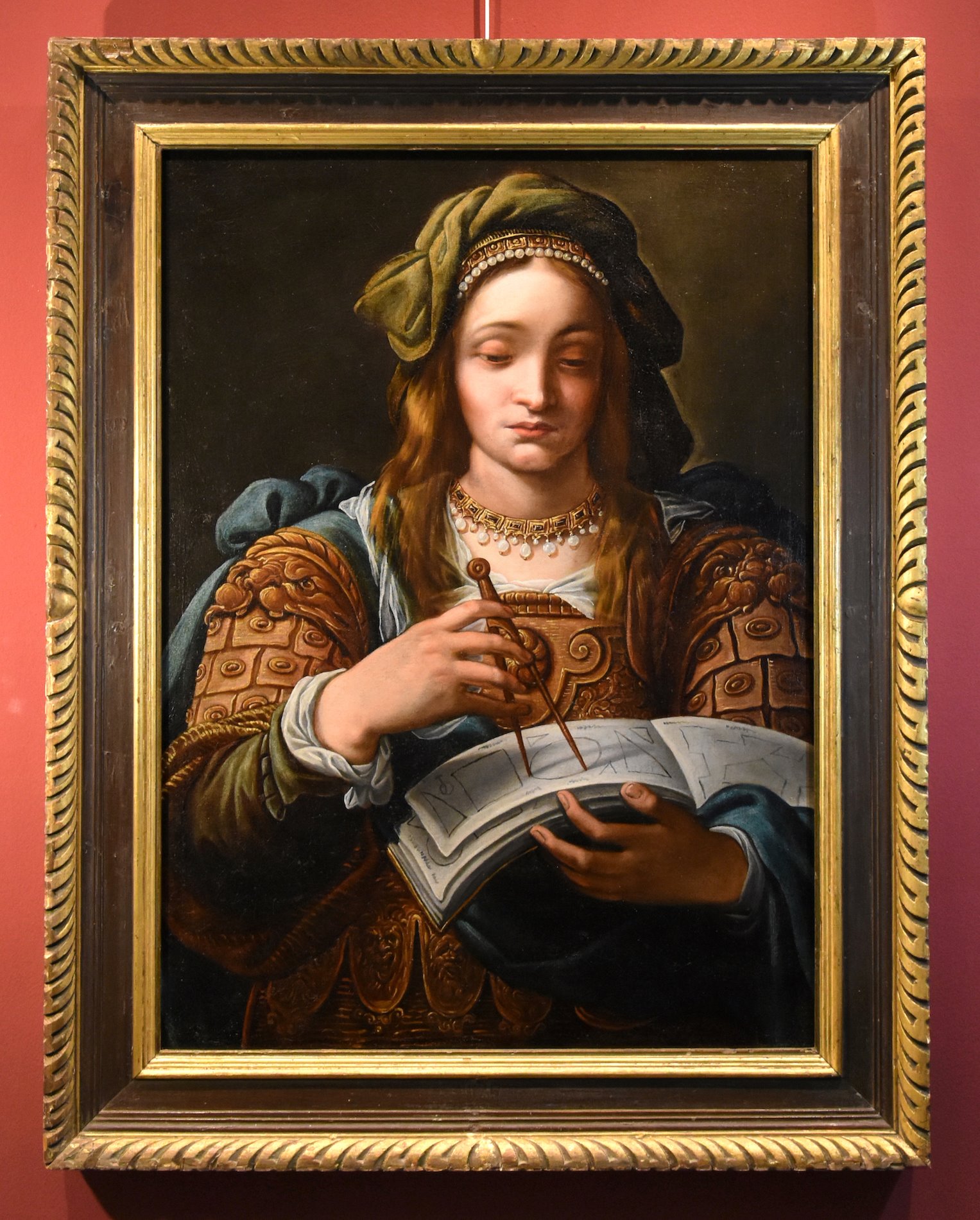
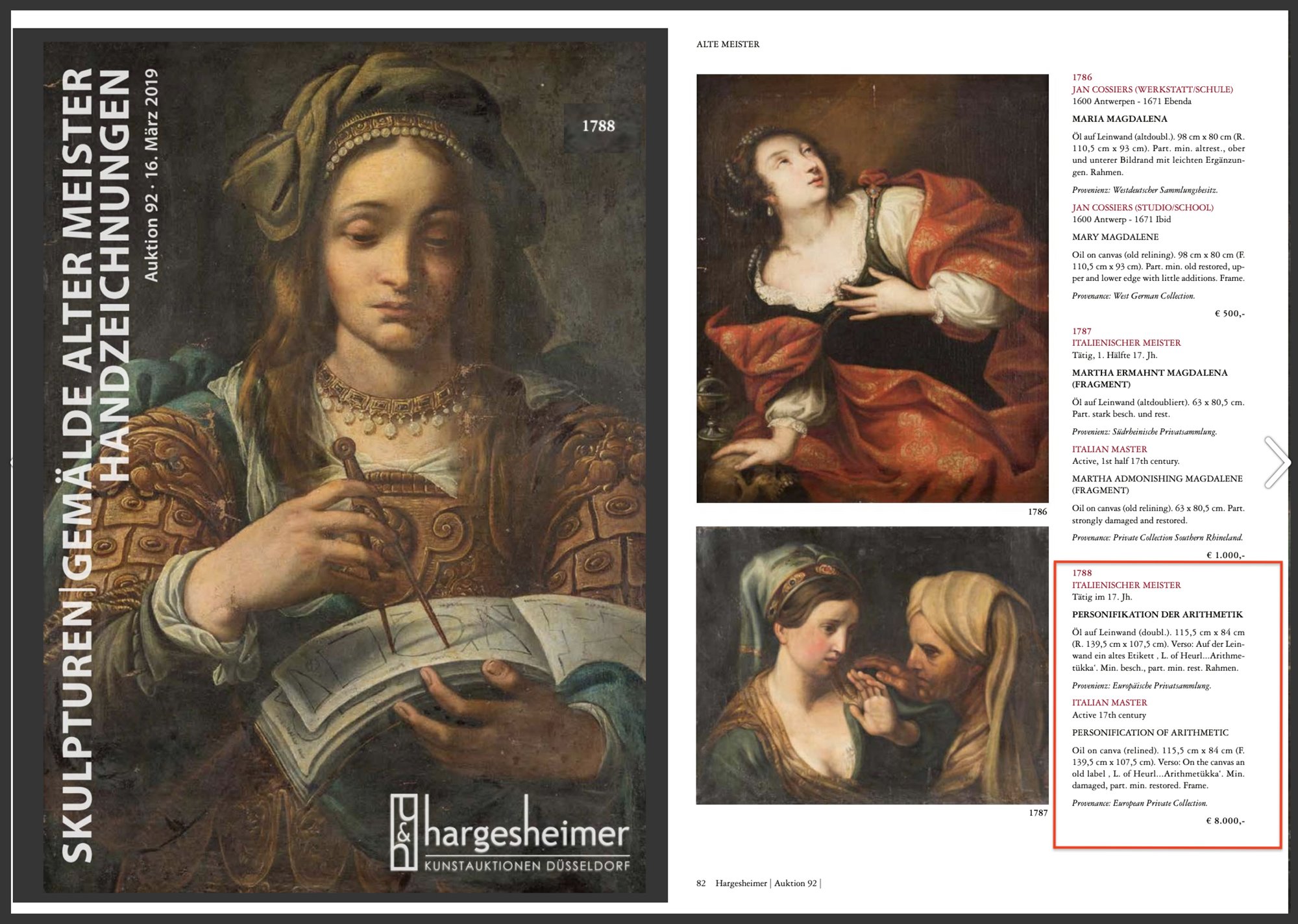
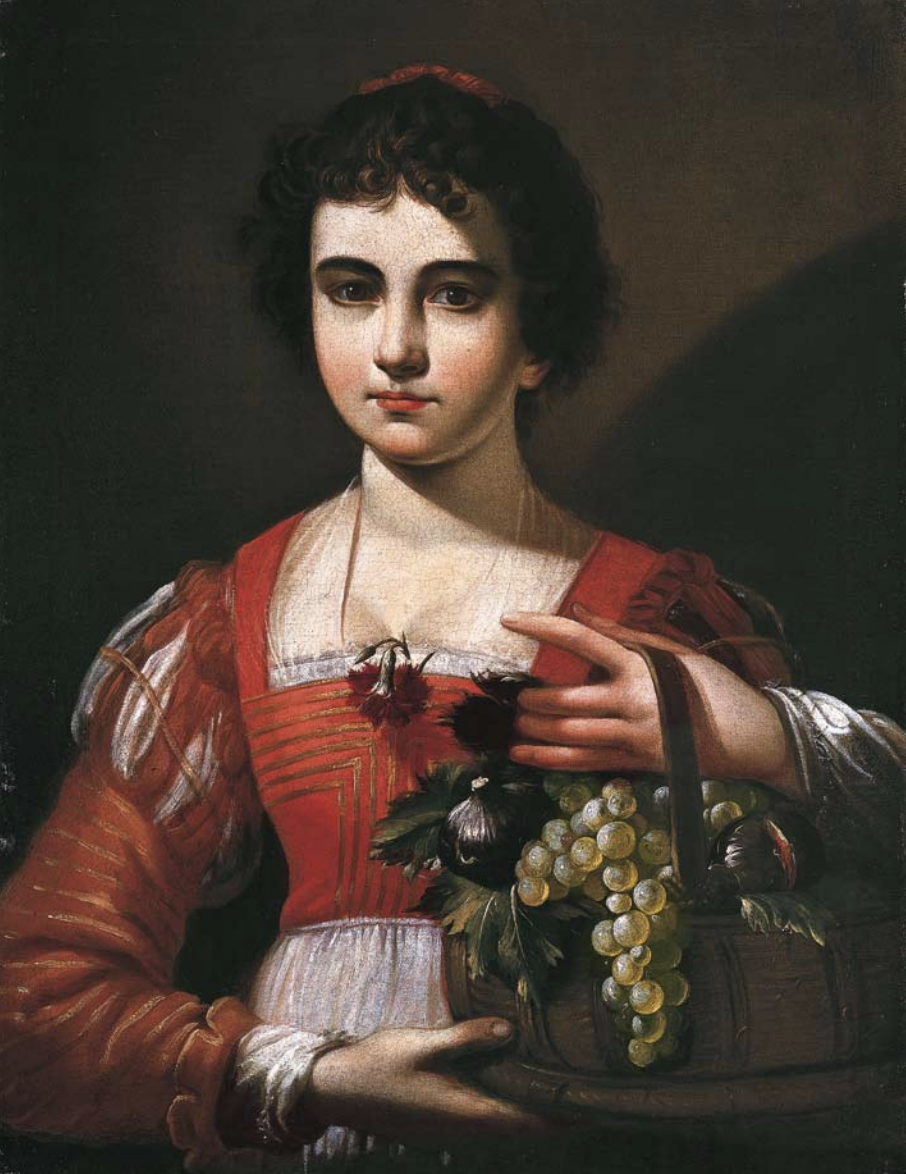
.jpg)
